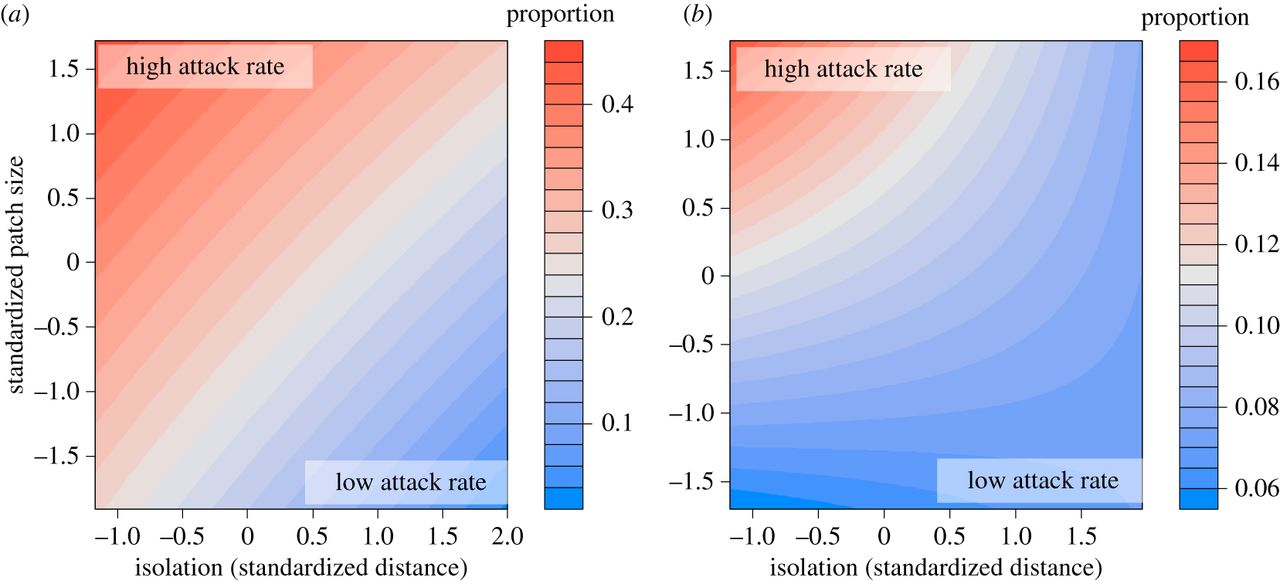Host–parasitoid evolution in a metacommunity
PhD candidate, Denon Start (Gilbert Lab) studied tall goldenrod that are parasitized by gall flies (Eurytoma), which in turn are parasitized by specialized Eurytoma wasps. He showed that parasites are unlikely to occur in small, isolated patches (Fig. 2 below), and that gall flies to evolve differently in these patches as a result. His research indicates how naturally patchy plant communities alter prey, predator, and parasite distributions, and maintain genetic diversity.

Fig 2. Predicted values of Eurosta and Eurytoma attack rate from GLMMs of patches differing in size and isolation. (a) Proportion of goldenrod stems galled by Eurosta and (b) proportion of Eurosta galls and proportion parasitized by Eurytoma. GLMMs used a logit link function with isolation and patch size as main effects, and patch as a random effect. High and low attack rates are depicted in red and blue, respectively, although the scales differ between plots. In both cases, attack was most frequent in large and near patches, but the attack rate of Eurosta was consistently higher.
This research was carried out at the Koffler Scientific Reserve.
For more detail see the full paper at the Preceedings B website.
Start, D. & B. Gilbert. 2016.
Host-parasitoid evolution in a metacommunity.
Proceedings of the Royal Society B
283: 20160477.
